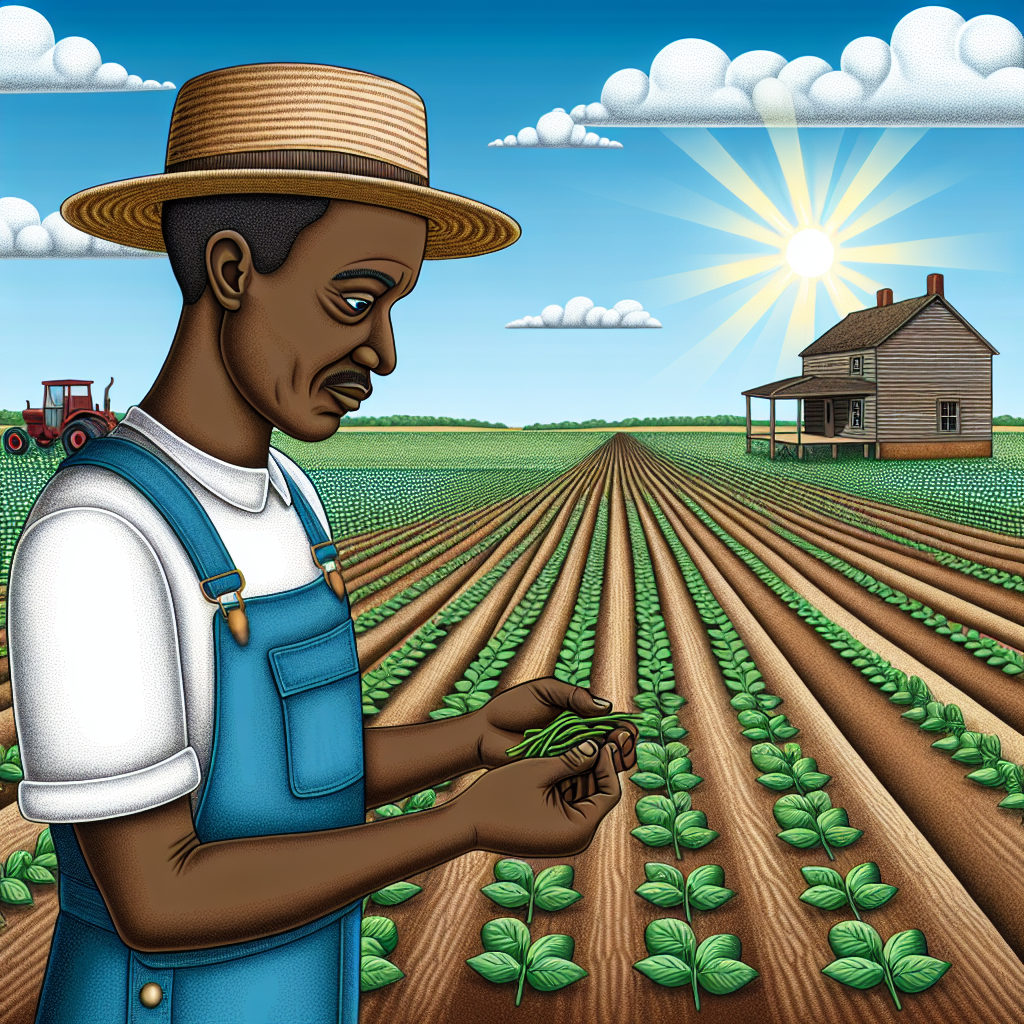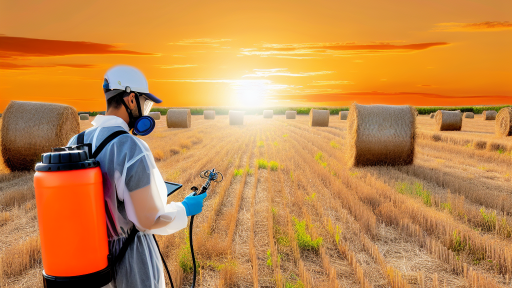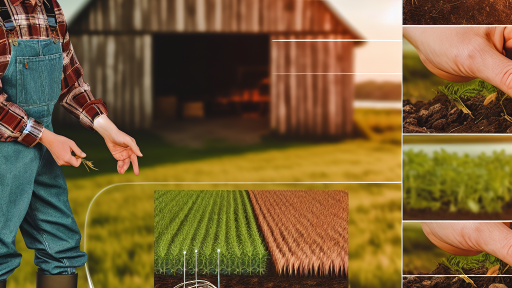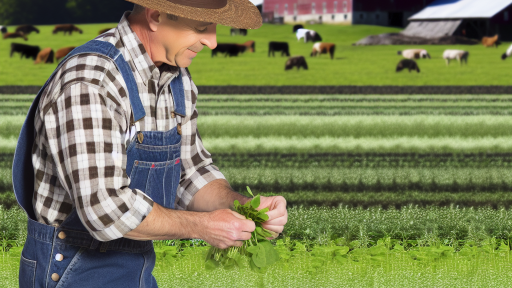Understanding the Benefits of Cover Crops in Sustainable Farming
Enhancing Soil Health
Cover crops significantly improve soil structure.
They enhance the soil’s organic matter content.
Additionally, they promote beneficial microbial activity.
As a result, soil becomes more fertile and productive.
Reducing Soil Erosion
Cover crops effectively protect the soil from erosion.
They minimize the impact of heavy rains.
Subsequently, this helps prevent nutrient loss.
Weed Suppression
Another advantage of cover crops is their ability to suppress weeds.
They compete for space and resources with weeds.
This reduces the need for herbicides, leading to lower costs.
Improving Water Retention
Cover crops help increase soil’s water-holding capacity.
This is especially beneficial in drought-prone regions.
Consequently, it leads to better moisture availability for cash crops.
Environmental Benefits
Utilizing cover crops contributes positively to the environment.
They help reduce carbon footprint in farming practices.
Transform Your Agribusiness
Unlock your farm's potential with expert advice tailored to your needs. Get actionable steps that drive real results.
Get StartedMoreover, they support wildlife habitats on agricultural lands.
Economic Advantages
Cover crops can lead to increased overall farm profitability.
They reduce input costs by improving soil health.
Farmers can benefit from better crop yields over time.
Key Factors to Consider When Choosing Cover Crops
Soil Health
Healthy soil promotes robust crop growth.
Cover crops enhance soil structure and fertility.
They also help in reducing compaction.
Furthermore, cover crops can enhance microbial activity.
Climate Adaptability
Choose cover crops that can thrive in your local climate.
Consider temperature and precipitation patterns.
Some species are more tolerant to drought or excess moisture.
Evaluate how seasonal conditions affect crop growth cycles.
Crop Rotation Benefits
Integrate cover crops within your crop rotation plan.
This practice can disrupt pest and disease cycles.
Moreover, it increases nutrient cycling in soil.
In addition, it enhances biodiversity on the farm.
Growth Duration
Consider the time available for cover crops to establish.
Some may require longer growing seasons than others.
Quick-growing varieties can provide benefits in a short time.
Also, evaluate how growth duration aligns with your main crops.
Economic Factors
Assess the cost of seed and establishment.
Calculate potential returns from using cover crops.
Including cover crops might lead to savings on chemical inputs.
Additionally, evaluate government aids or incentives for implementation.
Showcase Your Farming Business
Publish your professional farming services profile on our blog for a one-time fee of $200 and reach a dedicated audience of farmers and agribusiness owners.
Publish Your ProfileTypes of Cover Crops
An Overview of Popular Choices
Cover crops are essential for sustainable agriculture and soil health.
Farmers select cover crops based on specific goals and conditions.
Several types of cover crops offer various benefits and functions.
Grasses
Grasses are a common choice for cover crops on many farms.
They grow quickly and establish easily in the soil.
Popular grass options include ryegrass, oats, and barley.
- Ryegrass adds organic matter and improves soil structure.
- Oats suppress weeds and prevent erosion.
- Barley is effective in cold climates and can be seeded early.
Legumes
Legumes offer unique benefits by fixing nitrogen in the soil.
Clover and vetch are two well-regarded legume cover crops.
These plants enhance soil fertility and support microbial activity.
- Clover is excellent for boosting soil nitrogen and cover.
- Vetch provides ground cover and attracts beneficial insects.
Brassicas
Brassicas are gaining attention for their unique advantages.
They help break up compacted soil and manage pests effectively.
Common brassica options include turnips and radishes.
- Turnips improve soil structure and provide forage for grazing.
- Radishes are effective for nutrient scavenging and compaction relief.
Mixes of Cover Crops
Mixing different species of cover crops can maximize benefits.
These mixtures improve biodiversity and create resilient ecosystems.
Farmers often blend grasses, legumes, and brassicas for optimal results.
- Mixed cover crops can enhance soil health and fertility.
- They reduce weed competition and improve pest management.
Find Out More: Remote Sensing Technologies In Agricultural Management
Assessing Soil Health and Crop Rotation Needs
Understanding Soil Health
Soil health is essential for sustainable farming practices.
Farmers should regularly evaluate their soil’s condition.
Testing soil nutrient levels helps identify deficiencies.
Organic matter in the soil enhances its fertility.
Healthy soil promotes strong plant growth and resilience.
Factors Influencing Soil Health
Several factors impact soil health and performance.
- Soi type determines nutrient retention capabilities.
- Water availability affects soil moisture and crop yield.
- Compaction can hinder root development and growth.
Farmers should monitor these factors continuously.
Benefits of Crop Rotation
Crop rotation improves soil fertility and reduces pests.
It disrupts pest and disease cycles effectively.
Diverse crops enhance soil microbial diversity.
Rotating crops minimizes nutrient depletion in soil.
Selecting Cover Crops
Choosing the right cover crops is crucial for soil health.
Cover crops prevent erosion and improve soil structure.
They also add organic matter back into the soil.
Farmers should consider their specific soil needs.
Different cover crops serve various agricultural purposes.
Evolving Practices and Adaptations
Farm techniques should adapt based on soil health assessments.
Farmers can experiment with different cover crops each season.
Regular evaluation helps identify the best combinations.
Continuous learning allows for improved farming practices.
Delve into the Subject: Best Cover Crops to Improve Soil Fertility
Climate Considerations: Selecting Cover Crops for Different Regions
Understanding Regional Climate Differences
Climate plays a crucial role in selecting cover crops.
Each region has specific weather patterns that affect crop survival.
Recognizing these differences helps farmers make informed decisions.
Showcase Your Farming Business
Publish your professional farming services profile on our blog for a one-time fee of $200 and reach a dedicated audience of farmers and agribusiness owners.
Publish Your ProfileCool Climate Considerations
Regions with cool climates experience shorter growing seasons.
In these areas, winter-hardy cover crops thrive.
Common choices include rye and hairy vetch.
These crops prevent soil erosion and improve soil structure.
Warm Climate Considerations
Warm regions offer longer growing seasons, allowing for diverse crop choices.
Planting legumes like clover or peanuts works well in these climates.
These crops enhance nitrogen levels in the soil.
Moreover, they suppress weeds effectively.
Understanding Moisture Levels
Moisture availability greatly influences cover crop selection.
Drought-prone areas benefit from deep-rooted species.
Consider planting sorghum-sudangrass or cowpeas in these conditions.
These crops help retain moisture and improve soil organic matter.
Adapting to Soil Types
Soil type affects the suitability of cover crops as well.
Sandy soils benefit from crops that minimize erosion.
Annual ryegrass works effectively in sandy conditions.
Conversely, clay soils may favor crops that enhance drainage.
Cover crops like buckwheat can help with this improvement.
Consulting Local Agronomy Experts
Local agronomists can provide tailored recommendations.
They understand regional climate, soil types, and cropping strategies.
Engaging with local extension services may also yield valuable insights.
Networking with neighbors can further enhance knowledge sharing.
See Related Content: Mulching for Pest Management in Crop Cultivation

How to Successfully Establish and Manage Cover Crops
Understanding Your Farm’s Needs
Begin by assessing your farm’s specific requirements.
Different crops serve various purposes, so select accordingly.
Soil health, pest control, and nutrient management are vital considerations.
Choosing the Right Cover Crops
Research suitable cover crop species for your region.
Consult local agricultural extensions for expert recommendations.
Consider both annual and perennial options based on your goals.
Planning for Successful Establishment
Timing is key when planting cover crops.
Establish them before winter to prevent soil erosion.
Prepare your soil through tillage or no-till practices.
Incorporate a nutrient plan prior to planting.
Managing Your Cover Crops
Monitor your cover crops regularly for pests and diseases.
Adjust management practices based on observations and growth stage.
Utilize crop rotation techniques to enhance effectiveness.
Harvesting and Terminating Cover Crops
Know the right time to terminate cover crops for optimal benefits.
Use methods such as mowing or herbicide application as needed.
Aim to leave a residue that enhances soil health post-harvest.
Evaluating the Benefits of Cover Crops
Conduct soil tests to measure health and nutrient levels.
Evaluate improvements in soil structure and fertility over time.
Showcase Your Farming Business
Publish your professional farming services profile on our blog for a one-time fee of $200 and reach a dedicated audience of farmers and agribusiness owners.
Publish Your ProfileDocument changes and successes to optimize future practices.
Uncover the Details: Benefits of Mulching for Soil Structure and Fertility
Economic Impacts: Cost Analysis of Cover Crop Implementation
Initial Costs of Cover Crop Establishment
Implementing cover crops involves several initial costs.
Seed purchasing represents a significant expense.
Labor for planting and managing cover crops also adds to the cost.
Equipment rental or usage fees may increase initial investment.
Farmers should consider these factors when budgeting.
Long-Term Financial Benefits
Despite initial costs, cover crops offer long-term financial advantages.
They improve soil health, which enhances crop yields over time.
Increased yields translate to higher revenue for farmers.
Moreover, cover crops can reduce the need for chemical fertilizers.
This practice leads to lower input costs in the long run.
Cost-Benefit Analysis
A thorough cost-benefit analysis aids in decision-making.
Farmers should weigh initial expenses against long-term gains.
Calculating potential savings on fertilizers is crucial.
Additionally, savings from reduced erosion can be significant.
Overall, this analysis enables informed financial choices.
Economic Incentives and Support
Various programs offer financial incentives for cover crop use.
Government grants and subsidies can offset initial costs.
Farmers should explore local and federal assistance programs.
Engaging with agricultural extension services can provide guidance.
These resources may enhance overall financial feasibility.
Case Studies of Successful Implementation
Examining case studies reveals successful cover crop initiatives.
For instance, Green Valley Farms saw a 20% yield increase.
This boost resulted in significant financial gain over time.
Similarly, Blue Ridge Agriculture reduced input costs by 15%.
Such examples can inspire other farmers to adopt these practices.
Common Mistakes to Avoid When Choosing Cover Crops
Ignoring Soil Conditions
Farmers often overlook the specific soil conditions when selecting cover crops.
Soil type significantly affects crop performance and benefits.
Testing soil for pH, texture, and nutrient levels is essential.
Make adjustments based on test results to optimize growth.
Neglecting Climate Considerations
Climate plays a crucial role in successful cover crop implementation.
Choosing crops suited to local climate conditions enhances results.
Farmers should consider temperature, rainfall, and sunlight when selecting.
Additionally, seasonal variations can impact crop viability.
Overlooking Crop Rotation Practices
Farming without considering crop rotation can lead to mistakes.
Like-mind crops may deplete the same nutrients in the soil.
Diverse cover crops can improve soil health and fertility.
Incorporate legumes to fix nitrogen and enhance soil structure.
Failing to Plan for Weed Management
Weed control strategies should not be an afterthought.
Showcase Your Farming Business
Publish your professional farming services profile on our blog for a one-time fee of $200 and reach a dedicated audience of farmers and agribusiness owners.
Publish Your ProfileCover crops can suppress weeds, but proper timing is essential.
Farmers must manage the termination of cover crops effectively.
Adjustments may be necessary based on specific weed challenges.
Disregarding Economic Factors
Economic viability is a key factor in cover crop selection.
Farmers need to analyze costs versus benefits before implementation.
Consider potential savings on fertilizers and pest control.
Evaluate long-term impacts on soil health to enhance profitability.
Inadequate Knowledge of Available Species
Not researching cover crop species is a common mistake.
Different species offer varied benefits for soil and crops.
Familiarize yourself with the strengths of each option.
Consult local agricultural resources for tailored recommendations.
Additional Resources
Selecting the Best Cover Crops for Your Farm – SARE
Cover Cropping to Improve Climate Resilience | USDA Climate Hubs




